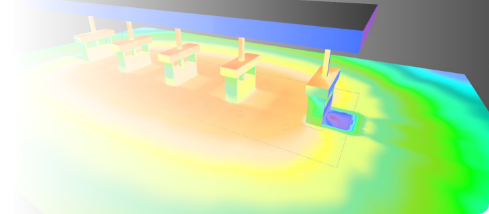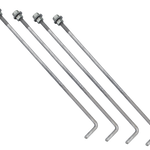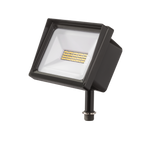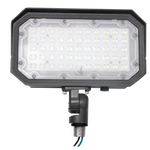You have no items in your shopping cart.
In the world of business, some lights shine brighter than others, and nowhere is that more evident than at a gas station. Picture the scene: it's late at night, a driver is seeking fuel, and there, like a beacon in the night, stands a well-lit gas station. But this isn't just about ambiance; it's about safety, efficiency, and the image the business projects.
Crafting the right lighting for a gas station is no small task, involving careful design, thoughtful consideration of regulations, and the selection of top-notch fixtures. At Jarvis Lighting, we've helped countless businesses illuminate their spaces, and here, we're going to delve deep into the intricacies of designing gas station lighting.
Understanding Gas Station Lighting Requirements
Safety and Visibility Considerations
Safety isn't just the name of the game; it's the heart of it. A gas station, filled with potentially hazardous materials, demands proper lighting for the well-being of customers and employees alike. Properly illuminated spaces reduce the risk of accidents, from slips and falls to more serious mishaps involving vehicles. Ensuring that the lighting doesn't cast shadows, particularly in areas where customers are walking or vehicles are moving, is paramount.
Energy Efficiency and Sustainability
Green is the new black, and sustainability is more than just a buzzword; it's a necessity. Gas stations, which operate for extended hours, often 24/7, need energy-efficient lighting to keep operational costs down. This is where LED lighting, known for its longevity and reduced energy consumption, comes into play, offering a sustainable and cost-effective solution.
Compliance with Regulations and Standards
When the rubber meets the road, gas stations must adhere to a plethora of local, state, and federal regulations and standards concerning lighting. From the recommended brightness levels to the types of fixtures used, understanding and abiding by these standards isn't just a good practice; it's a legal requirement.
Key Steps in Designing Gas Station Lighting
1. Site Assessment and Layout Planning
Before embarking on any journey, one must chart the course. The same holds true for gas station lighting design. Begin with a comprehensive site assessment. Take into consideration the size of the lot, the location of the pumps, canopies, the store, and any other structures. With a thorough understanding of the layout, designers can make informed decisions on fixture types, placement, and illuminance.
2. Fixture Selection and Placement
Choosing the right fixture is akin to choosing the right tool for the job. But remember, where you place that tool is equally essential. Consider how the light will disperse from each fixture, ensuring an even distribution of light. No customer wants to fuel up in a shadowy nook.
3. Illuminance Calculations and Simulation
Numbers don’t lie. Using specialized software, designers can calculate the expected light output from each fixture, ensuring that the gas station meets the required brightness levels. Simulations can offer a preview of how the final lighting will look, allowing for adjustments before actual installation.
4. Light Pollution Mitigation
Bright lights can be a boon for drivers but a bane for neighbors. Gas stations must prevent their lights from becoming a source of light pollution. Using fixtures that direct light downward, rather than outward, can help in reducing glare and minimizing unwanted light spill.
5. Emergency and Backup Lighting
Expect the best, plan for the worst. Power outages can occur, but business shouldn't come to a grinding halt. Emergency and backup lighting ensures that even in the face of adversity, the gas station remains functional and safe.
6. Smart Lighting Solutions
In the age of smart everything, lighting is no exception. From dimming capabilities to motion sensors, incorporating smart solutions allows for increased efficiency and adaptability.
7. Aesthetics and Brand Identity
Beyond mere function, lighting plays a significant role in aesthetics and brand identity. Gas stations, like any other business, have a brand image to uphold. Thoughtful lighting design can emphasize the architecture, create ambiance, and enhance the overall look and feel of the station.
Installation, Testing, and Maintenance
Proper Installation Practices
Once the design is in place, attention shifts to installation. Proper installation ensures optimal performance and longevity. Cutting corners here can lead to frequent outages, higher maintenance costs, and even safety hazards.
Photometric Testing and Verification
You wouldn't drive a car without testing the brakes, and the same principle applies here. After installation, photometric tests should be conducted to verify that the actual lighting matches the design specifications and meets regulatory standards.
Ongoing Maintenance Strategies
Like any piece of machinery, lighting systems require maintenance. Regular checks for outages, potential hazards, and efficiency can extend the life of the fixtures and ensure continuous optimal performance.
LED Lighting: Advantages and Selection Criteria
Why LED is the preferred choice for gas stations.
The world isn't just shifting towards LED lighting; it's charging towards it at full speed. With their unmatched energy efficiency, reduced carbon footprint, and longer lifespan, LEDs are the torchbearers in the realm of lighting. For gas stations, the energy savings, given their extended operational hours, can be substantial.
Evaluating LED performance metrics.
Every light shines, but not all shine equally.
1. Lumens per watt (efficacy)
When evaluating LEDs, one must consider their efficacy. Simply put, efficacy measures how much light is produced for each watt of electricity consumed. A higher lumens-per-watt ratio indicates a more efficient light source.
2. Lifespan and lumen depreciation
Over time, all lights dim. But how quickly they dim, or their lumen depreciation, can vary. LEDs are renowned for their long lifespan, often outlasting their traditional counterparts by years, even decades. But ensuring minimal lumen depreciation ensures they shine brightly throughout their life.
3. Ingress protection (IP) rating for moisture and dust.
Gas stations are exposed to the elements. Whether it's rain, dust, or snow, lighting fixtures need to withstand these conditions. Here, the IP rating, which measures resistance to moisture and dust, comes to the fore. A higher IP rating indicates better protection.
Controls and automation: Motion sensors, dimmers, and smart systems.
Automation isn't just about convenience; it's about optimization. Controls like motion sensors can save energy by ensuring lights are only on when necessary. Dimmers can adjust brightness based on the time of day or occupancy, and smart systems can integrate these functions seamlessly.
Financial benefits: ROI and TCO analysis for LED installations.
Money talks, and for businesses, the bottom line often takes center stage. While the initial investment in LED lighting might be higher, the return on investment (ROI) is swift thanks to energy savings and reduced maintenance costs. A total cost of ownership (TCO) analysis can provide a clearer picture of the long-term financial benefits of LED installations.
Jarvis Lighting: High-Performance LED Gas Station Lighting
When you're in the business of shedding light, quality is key. At Jarvis Lighting, our commitment to excellence shines through our range of high-performance LED lighting solutions, tailor-made for gas stations. From canopy lights to wall packs, our products not only meet the stringent standards and regulations in place but often surpass them, offering our clients unmatched brightness, efficiency, and durability.
With a focus on innovation, we have developed lighting fixtures that seamlessly integrate with smart systems, providing a modern, future-proof solution. Our LED lights are crafted with the unique challenges of gas stations in mind, ensuring they offer optimal visibility, safety, and aesthetics.










